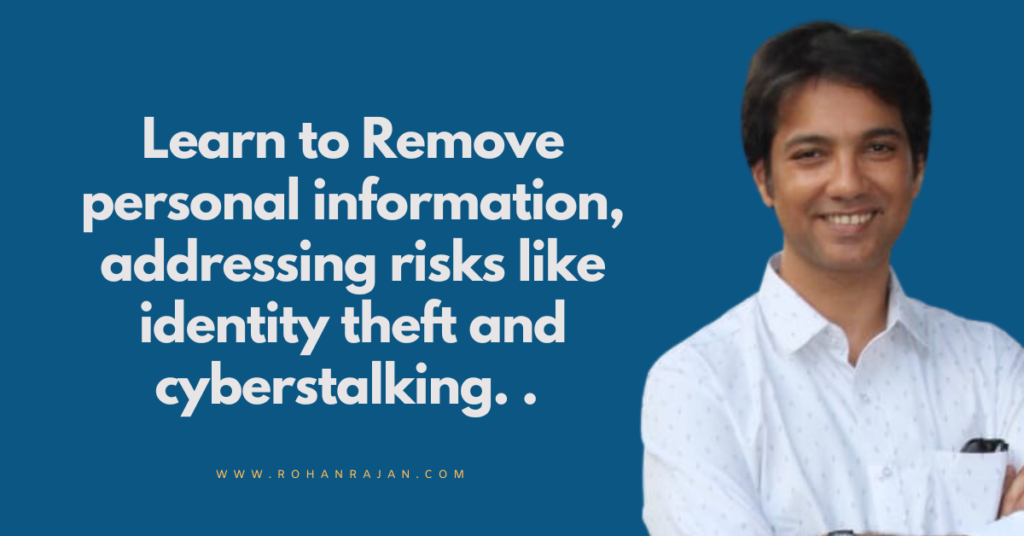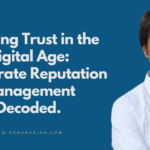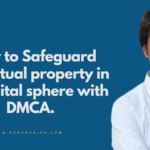In today’s digital age, our personal information is more accessible than ever before. From social media platforms to online directories, our details are often just a click away for anyone curious enough to look. While the internet has brought numerous conveniences, it also poses risks, such as identity theft, cyberstalking, and privacy concerns. In this article, we’ll explore essential tips to safeguard your online presence by removing personal information.
I. Introduction
A. Definition of Personal Information
Personal information encompasses any data that identifies an individual, including names, addresses, phone numbers, and even digital footprints. It forms the core of our online identity.
B. Importance of Removing Personal Information
The increasing prevalence of cyber threats emphasizes the crucial need to proactively manage and control personal information online. Safeguarding this information not only protects individuals but also contributes to a safer online environment.
II. Risks of Having Personal Information Online
A. Identity Theft
One of the most significant risks associated with having personal information online is identity theft. Malicious actors can exploit this information to impersonate individuals, leading to financial and legal consequences.
B. Cyberstalking
The internet provides anonymity, making it a breeding ground for cyberstalkers. Removing personal information limits the potential for individuals to become targets of online harassment.
C. Privacy Concerns
The erosion of privacy is a growing concern. Individuals may feel vulnerable if too much personal information is readily available online, leading to a desire for greater control over their digital footprint.
III. Tips for Removing Personal Information
A. Conducting a Personal Audit
Begin by conducting a thorough audit of your online presence. Identify websites that contain personal information and assess the necessity of that information being there.
B. Contacting Websites Directly
Reach out to website administrators directly to request the removal of personal information. Many websites have procedures in place for handling such requests.
C. Utilizing Online Tools
Explore online tools specifically designed for removing personal information. These tools can streamline the process, automating the removal requests on multiple platforms.
D. Regularly Monitoring Online Presence
Establish a routine for monitoring your online presence. Regularly check search engine results and popular online directories to ensure your personal information remains secure.
IV. Tools and Resources
A. Opt-Out Websites
Several websites allow individuals to opt-out of data collection. Utilize these platforms to proactively manage and control the dissemination of personal information.
B. Privacy Protection Services
Consider investing in privacy protection services that actively monitor and remove personal information from various online sources, providing an added layer of security.
C. Legal Measures
In cases where personal information removal becomes challenging, explore legal avenues. Seek professional advice to understand the legal recourse available to protect your online privacy.
V. Educating Others on Online Privacy
A. Importance of Digital Literacy
Promote digital literacy by educating others about the significance of safeguarding personal information. Share insights on responsible online behavior and privacy best practices.
B. Sharing Personal Experiences
Personal stories can be powerful motivators. Share experiences of successful personal information removal to inspire others to take control of their online presence.
VI. Conclusion
A. Recap of Key Points
In conclusion, taking control of your online presence is vital in today’s digital landscape. Removing personal information mitigates the risks associated with identity theft, cyberstalking, and privacy concerns.
B. Empowering Individuals to Take Control
By implementing the tips discussed in this article, individuals can actively participate in securing their online identity. Empowerment through education and proactive measures is the key to a safer and more secure digital future.
Frequently Asked Questions
Is it possible to remove all personal information from the internet?
While complete removal is challenging, proactive measures can significantly reduce the accessibility of personal information online.
How often should I conduct a personal audit of my online presence?
It’s advisable to conduct a personal audit at least twice a year to stay ahead of any potential risks.
Do privacy protection services guarantee complete security?
While they enhance security, no service can provide absolute guarantees. It’s essential to combine multiple strategies for comprehensive protection.
Are there legal consequences for websites that refuse to remove personal information?
Depending on jurisdiction, individuals may have legal recourse if websites fail to comply with valid removal requests.
What role does digital literacy play in online privacy?
Digital literacy is crucial in understanding and implementing effective online privacy measures. It empowers individuals to make informed decisions about their digital presence.




